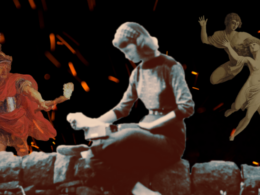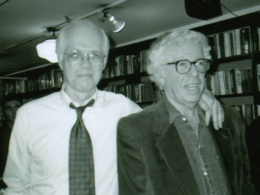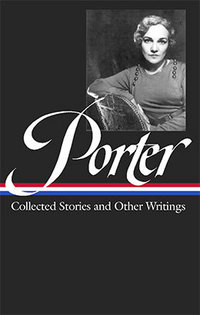
In connection with the publication in September 2008 of Katherine Anne Porter: Collected Stories and Other Writings, edited by Darlene Harbour Unrue, Rich Kelley conducted this exclusive interview for The Library of America e-Newsletter.
LOA: Katherine Anne Porter: Collected Stories and Other Writings gathers the author’s published stories, most of the essays and book reviews that were collected in her lifetime and many that were not, and six pieces that have never been collected before, including two autobiographical sketches. What criteria did you use in selecting pieces for inclusion?
Unrue: I hoped to bring together in this one volume the most comprehensive collection available of Katherine Anne Porter’s fiction and nonfiction, and in the case of the latter to make available some scattered gems not easily accessible. It seemed natural to begin with the 26 stories and short novels in The Collected Stories of Katherine Anne Porter, which won both the Pulitzer Prize and the National Book Award in 1966 and which continues to be the bedrock of Katherine Anne Porter’s critical reputation. All of Porter’s published nonfiction has intrinsic merit, but I chose pieces that I could fit comfortably into one of the categories Porter established herself in her first collection of nonfiction, The Days Before (1952), that is, “Critical,” “Personal and Particular,” and “Mexican,” or a fourth category I added, “Autobiographical.” I included two works, the charming seasonal memoir “A Christmas Story” and “The Never-Ending Wrong,” her account of the Sacco-Vanzetti trial, which were published both as small books and magazine articles during her lifetime. I also added six more pieces that are reprinted here for the first time since their original publication, valuable essays and sketches in which Porter reminisces about her past life and comments on her development as a writer.
I did not include Katherine Anne Porter’s public letters or any of her poems. Some of her poems are lovely and lyrical, but none of them matches her crystalline stories and are useful primarily for elucidation of her fictional themes. Her only long novel, Ship of Fools, the three published sections of her unfinished biography of Cotton Mather, and a selection of her brilliant letters belong in a second volume.
LOA: Robert Penn Warren placed Katherine Anne Porter with James Joyce, Katherine Mansfield, Sherwood Anderson, and Ernest Hemingway in “the relatively small group of writers who have done serious, consistent, original, and vital work in the form of short fiction.” Paul Rosenfeld compared her work to that of Flaubert, Hawthorne, and Henry James. Where would you place her in the pantheon of fiction writers and how would you characterize what she achieves in her work?
Unrue: If you look at that list, you see representatives from both the nineteenth
and twentieth centuries, an appropriate array, I think, of Porter’s literary family,
although Porter would probably have liked seeing herself also named in the
company of Laurence Sterne and Jonathan Swift, among other writers from the
fifteenth through eighteenth centuries. She shared with all of them and others
she named as her artistic forebears and contemporary sympathizers (such as
T. S. Eliot and Ezra Pound) an appreciation and employment of pure, controlled
language, an agreement with the classical concept of writing as a demanding
craft, and a willingness to look deeply into human existence. Among all those
named, Henry James represented her personal standard. In “The Situation in
American Writing” she divided artists into the “James-minded” and the
“Whitman-minded.” “For myself,” she wrote, “I choose James, holding as I do
with the conscious, disciplined artist, the serious expert against the expansive,
indiscriminately ‘cosmic’ sort. James, I believe, was the better workman, the
more advanced craftsman, a better thinker, a man with a heavier load to carry
than Whitman.”
She also was staking out her distance from an idealistic, romantic philosophy.
What she achieves in her work is an unflinching account of the human
condition, as she saw and described it painfully and eloquently. In the modernist
spirit, she traces the natural human tendency to search for truth and
meaning, showing that small glimpses of truth and small reconciliations light
the arduous pathway of a journey that is never complete. In her essay “St.
Augustine and the Bullfight” she wrote, “What is truth? I often ask myself. Who knows?” She later wrote, “I intend to go on looking for my little fragment . . .
with my entire sensory and intellectual being, coming up once in awhile with
some finding or other.”
LOA: In “Why I Write About Mexico,” Porter wrote, “All the things I write of I
have first known, and they are real to me.” Porter grew up in Texas and
spent several years in Mexico between 1920 and 1931. Is this what gives
her stories about Mexico and the “Miranda” stories set in Texas and
Louisiana their evocative power?
Unrue: I believe that the evocative power of Porter’s stories arises in their deep
core where her personal experience lies, sometimes so disguised it is difficult to
recognize. “Many an experience that I use in a story happened to me so early I
can hardly put it together,” she once said. It’s easy enough to see the autobiographical
elements in the wonderful “Miranda” stories, and in “On ‘Flowering
Judas’” Porter identified the personal experience that was the kernel of inspiration
for that particular Mexican story. One can hardly say that the Mexican stories
or the Miranda stories, however, are more powerful than, for example, “The Jilting
of Granny Weatherall,” which has been compared with Tolstoy’s “The Death of
Ivan Ilych,” or “Noon Wine,” which has been described as a modernist Greek
tragedy. In those works, too, lies Katherine Anne Porter’s personal experience.
“The Jilting of Granny Weatherall” is the result of Porter’s finally coming
to terms with the most painful experience of her remembered childhood, the
death of her paternal grandmother during a visit with relatives in West Texas.
Eleven-year-old Katherine Anne (known as Callie then) had accompanied her
grandmother on the trip to Marfa and had then to escort her corpse alone on
the nearly 500-mile train journey back to Kyle. For more than two decades the
pain and horror of that event lay buried in Porter’s memory until she was able
to imagine the arrival of death in her grandmother’s consciousness and not its
effect on herself. Porter explains in “‘Noon Wine’: the Sources” that the core
experience of that short novel was her awakening as a very young child to an
intuitive awareness of death after a murder near her grandmother’s farm and
yoking it to the death of her mother before she was two years old.
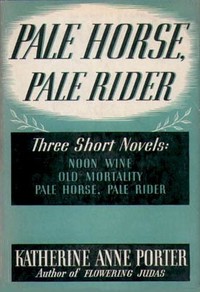
LOA: Themes of death, abandonment, and betrayal fill Porter’s work. The volume’s extensive chronology recounts that her mother died when she was two. Her father effectively abandoned the family during her childhood. And in her twenties she was stricken with tuberculosis and, much like Miranda in “Pale Horse, Pale Rider,” almost died during the 1918 influenza pandemic. How much do you think Porter’s biography influences her work?
Unrue: Her life experiences, especially the painful ones, were central to her fiction. I came to see that influence early in my critical study of her fiction, and in the early 1990s, after discovering serious gaps and numerous errors in the existing biographical record, I set about vigorously researching her life, eventually publishing Katherine Anne Porter: The Life of an Artist (2005). Porter suffered throughout her life, some of the suffering caused by events, such as those you cite, beyond her control, and some caused by her own choices, fed by a romantic inclination (alien to the rational perspective of her fiction) that had tragic consequences. She had idealized the dead mother whom she couldn’t remember, and she had idealized her “sainted” grandmother who provided the security of her second through eleventh year. She yearned for a loving and devoted husband and children, but none of the five husbands, foolishly chosen for one reason or another, fulfilled her ideal. At the end of her life, she regretted she had no children, telling one friend with what he considered profound sadness, “I’ve lost children in all the ways one can,” referring obliquely to the miscarriages, abortion, and stillbirth of her childbearing years. The pain of lost children is found in some of her most powerful stories.
LOA: Porter’s essays, reviews, and autobiographical sketches fill almost half this 1,093-page volume. In her introduction to her first collection of nonfiction, Porter wrote that [these papers] “represent the exact opposite of my fiction, in that they were written nearly all by request, with limitations of space, a date fixed for finishing, on a chosen subject or theme . . . they served to get me a living . . . so that I might be able to write my stories in their own time and way . . . The two ways of working helped and supported each other. I needed both.” Do you see her nonfiction informing and helping to form her fiction?
Unrue: The fiction and nonfiction worked together, sometimes with the nonfiction
representing an early stage of the process of creative composition, and at
other times simply representing another way, what Porter called “reportage,” of
treating the same subject. There are many examples of such companion pieces.
For example, two versions of “Hacienda” exist, the first one an article about the
filming of Eisenstein’s Que Viva Mexico! and the second a longer, fictionalized
version of the event. The essays “The Mexican Trinity” (1921) and “Where
Presidents Have No Friends” (1922) anticipate the themes of “Flowering Judas”
(1930). “The Necessary Enemy” (1948), on the other hand, is the factual essay
that is parallel to the story “Rope” (1928), both about the twin forces of love
and hate in a marriage, but the essay was written after the story when Porter
apparently felt she wanted to explore the subject further. The same is true of
“The Charmed Life” (1942), a character sketch of Scottish mineralogist William
Niven, fictionalized as archaeologist Givens in “María Concepción” (1922).
LOA: Porter takes great pains in her writing to make clear that she is a solitary,
self-created artist. In one of the previously uncollected autobiographical
sketches in this volume she writes, “All my intense growing years were
lived completely outside literary centers. I knew no other writers and had
no one to consult with on the single vital issue of my life.” Considering her
famous gregariousness and a life of many marriages and affairs, is this
an accurate description of her artistic pedigree?
Unrue: It’s accurate as far as it goes. Kyle, Texas, where she spent her second
through eleventh years, was hardly a literary center, although, ironically,
Porter’s childhood home was restored in 2000, named a National Literary
Landmark, and functions as a residence for writers and a literary center sponsoring
a speakers’ series and a writing competition for children. Porter didn’t
know professional writers in Kyle, or for that matter in San Antonio during the
year she spent there at the Thomas School at age 14 and 15. She was, however,
surrounded by literate people in her childhood. Her educated father was a serious
reader, especially of the eighteenth-century rationalists, and there were classics
in her grandmother’s bookcase preserved from a more affluent past. She
became a voracious reader in childhood and began a self-education that never
ended. When Porter was asked in her late years whether she thought “this background—
the comparative isolation of Southern rural life, and the atmosphere of
literary interest—helped to shape” her as a writer, she answered, “I think it’s
something in the blood.” Porter, however, was indeed hungry for an association
with other serious writers, and she didn’t find that until she arrived in
Greenwich Village in 1919 at the age of 29. Although she honed her craft with
journalistic writing for Texas newspapers and the Rocky Mountain News in
Denver, she didn’t consider newspaper people serious writers, that is, “artists.”
LOA: I marvel at Porter’s comment in 1952 that “My stories had to be accepted
and published exactly as they were written: that rule has never once been
broken . . . My stories are written in one draft, and if short enough, at one
sitting.” Her stories all seem so meticulously crafted—can she really have
resisted any editing and not spent considerable energy revising them?
Unrue: Porter’s description of her composition process is relatively accurate.
Once she started writing, she revised as she went. In “No Masters or Teachers”
she said that it took her “seventeen days and nights, quite literally” to write
“María Concepción.” But it had been forming in her mind for more than a year.
For some of her most personally painful stories, the distance in time between
the experiences that inspired them and Porter’s artistic renderings was about
ten years; for others, such as “The Jilting of Granny Weatherall,” it was much
longer. Whether a year, a decade, or more, she needed distance to shape her
material artistically and imagine the conclusion. She compared it to the forming
of an egg or a coral. Writing it down was the last stage of the process.
LOA: We tend to think of a writer’s style as evolving and changing over time. You
once wrote that “Porter’s style changed little over the years. The same
pure language of “Maria Concepcion” exists in Ship of Fools, as do the
same grammatical structures and diction.” What explains this unusual
consistency in style?
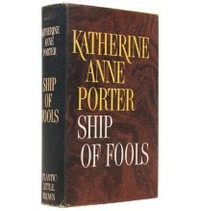
Unrue: To speak of “María Concepción” and Ship of Fools is to circumscribe the canon acknowledged by Porter, who identified “María Concepción” as her first original piece of fiction she allowed to be published. She threw away “bushels” of unpublished work, she said, because she didn’t want to publish anything that wasn’t “ready.” She dismissed the fairy tales she “retold” and published in 1920, but she also hid the fact that she had published children’s stories in Texas newspapers earlier than 1920. Fragments of her earliest attempts at adult fiction reveal a stage short of the tight syntax and pure language found in that first acknowledged story, published when Porter was 32 years old with years of apprenticeship behind her. Once the mature style, classical in its clarity, was achieved, it didn’t change. “I love the purity of language,” she wrote late in life. “I keep cautioning my students and anyone who will listen to me not to use the jargon of the trades, not to use scientific language, because they’re going to be out of date the day after tomorrow. The scientists change their vocabulary, their jargon every day. So do the doctors, and the politicians, and the theologians—everybody, every profession, every trade changes its vocabulary all of the time. But there is a basic pure human speech that exists in every language. And that is the language of the poet and the writer.”
LOA: Katherine Anne Porter published her stories in three collections over 15
years: Flowering Judas and Other Stories; Pale Horse, Pale Rider: Three
Short Novels; and The Leaning Tower and Other Stories. Do you see a progression
in themes in these three collections?
Unrue: I don’t see a progression of themes, but perhaps a refinement and complication
of themes. The primary theme of “María Concepción,” for example, is the
power of primitive instinct over the facade of civilization, and that same theme
is explored in Ship of Fools with a more complex nuance. The theme of limited
parental love and its tragic consequences, for both the parent and the child, is
wonderfully dramatized in “He” (1927), “The Downward Path to Wisdom” (1939),
and “Holiday” (1960) but explodes in a many-faceted probe in Ship of Fools.
LOA: Critical acclaim greeted the publication of her first book of stories, Flowering Judas, in 1930, and each subsequent collection also received glowing reviews, yet she didn’t achieve popular success until, at the age of 75, she published her only novel, Ship of Fools. Can you account for this divergence between her critical reception and her popular appeal?
Unrue: As early as 1918, when Porter was on the staff of the _Rocky Mountain
News_, she was recognized as a “writer’s writer.” She was proud of that label,
interpreting it to mean that she was a dedicated artist who would not compromise
her work to acquire mass appeal. In fact, the editors and reviewers who
were her early champions represented small literary magazines with a specialized
readership. Then, too, Porter’s fiction did not yield its complex meanings
easily. Responding to a charge of “obscurity” in her fiction, Porter countered,
“Well, you don’t have to know everything about a work the first time you read
it.” Instead of being a “recondite writer,” as some early editors had considered
her, she said, “I’m no more mysterious than a goldfish floating in a bowl.” If the
simplicity and purity of her language seemed to promise simple interpretation,
that was not the case, just as it was not the case with Hemingway’s stories. _Ship
of Fools_, so long in the making, was heralded for years before it finally appeared
in 1962. By then, Porter was recognized as “The first lady of American Letters”
(a title, incidentally, that she abhorred as sexist), and readers of all levels of literary
sophistication rushed to buy it. The award-winning movie adapted from
the novel of course added to its popular appeal.
LOA: Critics have struggled to describe what it is that makes a Katherine Anne
Porter story distinctive. Robert Penn Warren has probably the best-known
characterization: he called her irony “an irony with a center, never an
irony for irony’s sake. It simply implies,” he wrote, “a refusal to accept the
formula, the ready-made solution, the hand-me-down morality, the word
for the spirit.” Denis Donoghue, on the other hand wrote, “Miss Porter
tends to write a story by sending the mind of a character to trouble the
past, turning facts into myths and myths into mythologies; then to return,
freighted and ready.” I know that you’ve written two critical books,
Understanding Katherine Anne Porter and Truth and Vision in Katherine
Anne Porter’s Fiction, so I wonder if you’d comment on why the method of
her magic is so elusive.
Unrue: What Warren meant, I think, is that the irony pervasive in Porter’s stories
is organic, embedded in the characters and events so tightly that it can’t be
extracted from an individual story without destroying it. He was also referring
to the formulaic stories common to the 1920s when Porter began publishing
and “irony” was an operative critical concept to be sustained for several more
decades. By “irony” I think he meant those Hegelian oppositions, or paradoxes,
within an individual story that evolve to some kind of classical resolution by the
story’s conclusion. “Any true work of art,” Porter once said, “has got to give you
the feeling of reconciliation—what the Greeks would call catharsis, the purification
of your mind and imagination—through an ending that is endurable
because it is right and true.” Donoghue seems to me to have been referring for
the most part to the Miranda stories, perhaps “Old Mortality” in particular.
Porter’s stories are indeed magical, and after identifying the themes and parsing
the style, the critic, as well as the reader, is left with something inexplicable
but strangely satisfying. To go further would be a little like trying to split an
atom. Porter simply leaves the reader with an irreducible gift.
LOA: You’ve spent years studying Katherine Anne Porter’s works and must have
sifted through countless papers to edit this collection. Did creating this
volume lead you to any discoveries or new conclusions about her work?
Do you have any favorite pieces?
Unrue: I can’t say that in editing this volume I made particular discoveries or
reached new conclusions. But re-reading her stories and nonfiction in one fell
swoop reminded me again why I have spent my professional life studying the
life and writing of this stellar writer and how truly satisfying my work has been.
I have many favorites among her stories and short novels, but “Pale Horse, Pale
Rider” is my favorite, as it was hers. Among my favorites of her nonfiction
pieces are “In a Mexican Patio,” which captures the social atmosphere of early
1920s Mexico in addition to revealing Porter’s own state of mind; “Portrait: Old
South,” a character sketch of her grandmother that evokes the era of
Reconstruction; and “St. Augustine and the Bullfight,” an autobiographical
essay in which Porter recounts her unexpected discovery of primitive instinct
within herself and muses on the difference between adventure and experience
as Augustine defined them.
LOA: Will there be another Library of America Katherine Anne Porter volume?
Unrue: I surely hope so. As I said earlier, Ship of Fools, the previously published
chapters from Porter’s unfinished biography of Cotton Mather, and a
selection of her marvelous letters (a volume of which I am editing) would constitute
the heart of another valuable collection of Porter’s writings.


